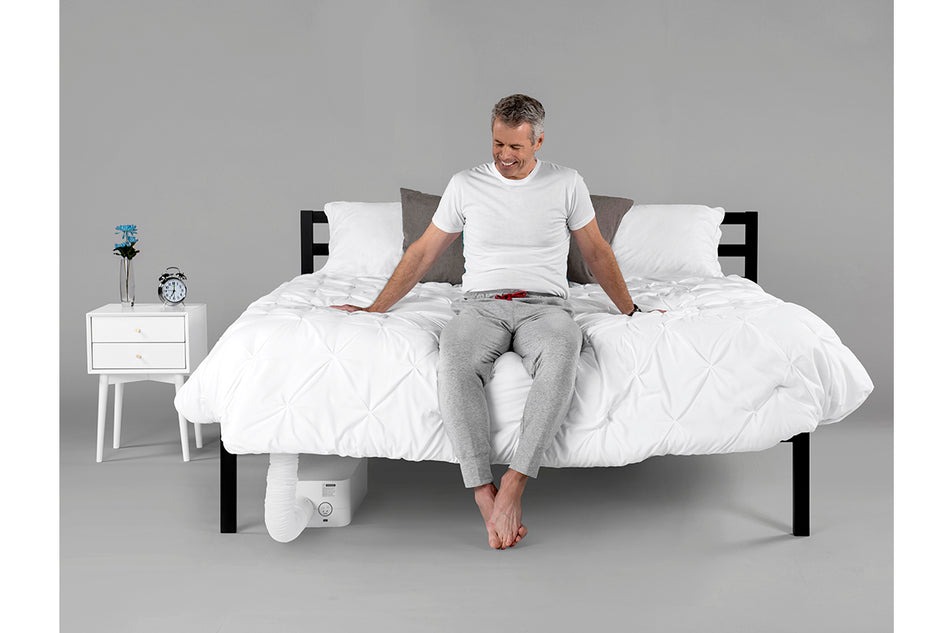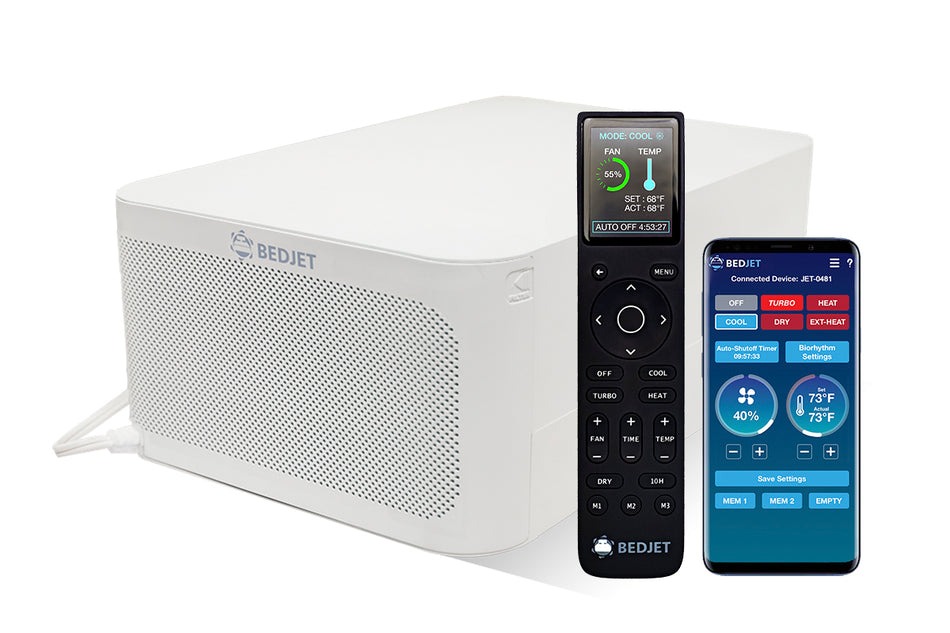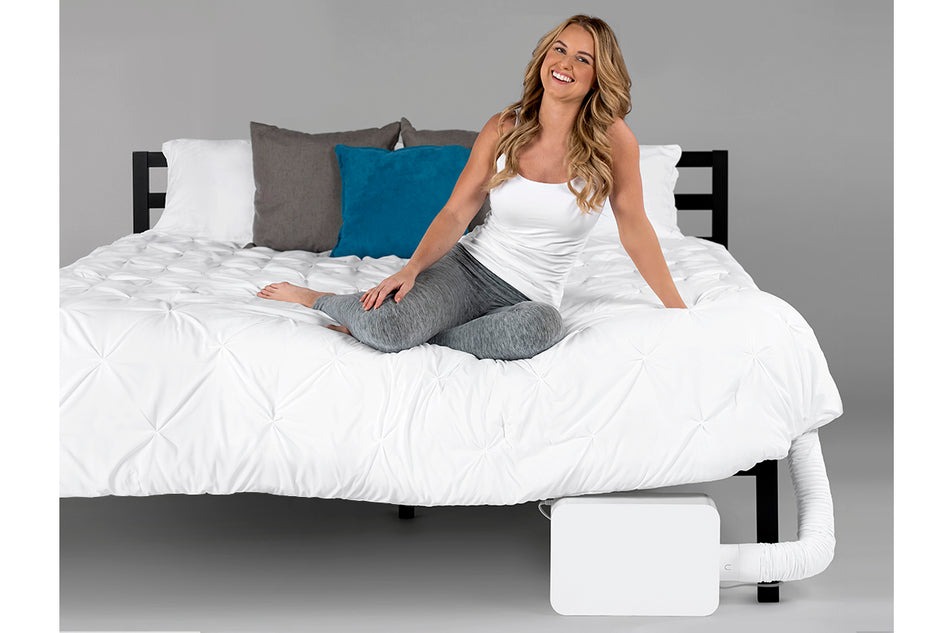BedJet can Cool and Heat Your Bed — Without Breaking the Bank
Compared to its main competitor, EightSleep, the BedJet is cheaper, more durable, and doesn’t require a subscription for a similar result.

If you have watched technology coverage on YouTube, you are probably familiar with EightSleep. For those unfamiliar, it’s the water-filled mattress cover beloved by many famous millionaires and billionaires — everyone from top YouTubers to Elon Musk owns one — which connects to a small machine on the floor, adjusting the bed’s temperature as you sleep. If you like your bed cool, you can set it for cold; and if you like a toasty warm bed, it can do that as well. If you want the temperature to vary through the night to account for changes in your body temperature, you’re in luck. Additionally, if your partner has a different body temperature than you, you can control each side of the bed individually.
It sounds great, but there are three fundamental problems with it the EightSleep. Firstly, it cools you using water in the mattress cover, which is great when it works but potentially catastrophic when it fails. And if it breaks, it’s not cheap to replace. The EightSleep 4 starts at $2,449 and goes to $2,749 for a king-size mattress. The quality of your sleep is crucial to your health, but that’s a simply astonishing amount of money for a mattress cover. Worst of all, that price is just the entry fee.
If you want to use the smartest features of the pod — automatic temperature detection, sleep and health reports, vibration and temperature alarms, and snoring detection — you need to pay a $15 monthly subscription in perpetuity. If you want a five-year warranty for the very expensive mattress cover you just bought — which is wise, given that it’s full of water — that’s another $9 per month, making the subscription $24 per month. For a mattress cover.
Thankfully, EightSleep has a competitor in BedJet — of SharkTank fame — and though it lacks some of the smartest features, it has its own advantages.

To start, the BedJet is, as its name suggests, a fan pushing air under your sheets rather than changing the temperature of water in a cover. Because of this, you can buy their hollow Cloud Sheet — a high-quality cotton sheet that slightly inflates and diffuses the air along the length of the bed — or you can just use the unit with your existing sheets, and it can be used for any bed size or style you like. Though pushing air may be slightly less effective at transferring temperature than lying atop a water-filled mattress cover, it is far more flexible, reduces the risk of water damage, and has the added bonus of drying any sweat on your sheets. It’s also easy to set up, and though it’s loud on full fan speed, I usually had it on 50 percent power, and the fan drone is a pleasant background noise, almost like a white-noise machine.
From my testing, any concerns about temperature efficacy are unwarranted. On colder nights, it immediately made the bed toasty and inviting — and can get hotter than I’d ever want — eliminating the need to have a heater on, thus saving power. The cooling element should be less impressive, but I haven’t found this to be so.
Unlike the EightSleep, the BedJet has no active cooling element, so it can only cool your bed to the temperature of the air in the room. However, even during an 85-degree London summer night, the air temperature in my room at floor height was significantly cooler than my bed with myself and my partner under the sheets, and was a needed relief. If your bedroom has air conditioning, this will only be more effective, and using a Dual Cloud Sheet, you can use a pair of BedJets to set a different temperature for each side of the bed. The temperature doesn’t need to be static as you can set up “biorhythms” in the app, having the temperature adjust up and down during the night.
This isn’t as simple to do as with the EightSleep, nor is it automatic, but their default options work well and are easily tweaked, and it has dramatically improved the quality of my sleep.

The BedJet itself doesn’t track sleep information like the EightSleep does, but I use the under-mattress sleep analyzer from Withings, which is $130 and provides all this — without a subscription.
The main advantage above all this though is the price. There is no subscription, and a single BedJet costs $569, though it goes on sale for under $400. That’s a fraction of the price of the EightSleep for much of the same core experience, and the upgrades don’t cost much either to get it close.
If you want to control the BedJet with a remote as well as the app, it’s only a $30 upgrade and well worth it — the remote only lights up when you pick it up and is extremely easy to use. For those of us who don’t want to use a phone past midnight, it’s a great addition. Adding a Cloud Sheet is another $150, and for the quality of the sheets and the temperature benefit, it’s worth it though not necessary. If you want the full two-person BedJet experience with two units and the Dual Zone Cloudsheet, that’s $1,329, though it has been available on sale for under $1,000.

That’s not cheap, but it has meaningfully improved the quality of my sleep, saves energy costs that I would otherwise be spending on heating or cooling, and is far cheaper than its main competitor. Plus, there’s no subscription cost, and if you want to get it even cheaper, BedJet sells refurbished units.

